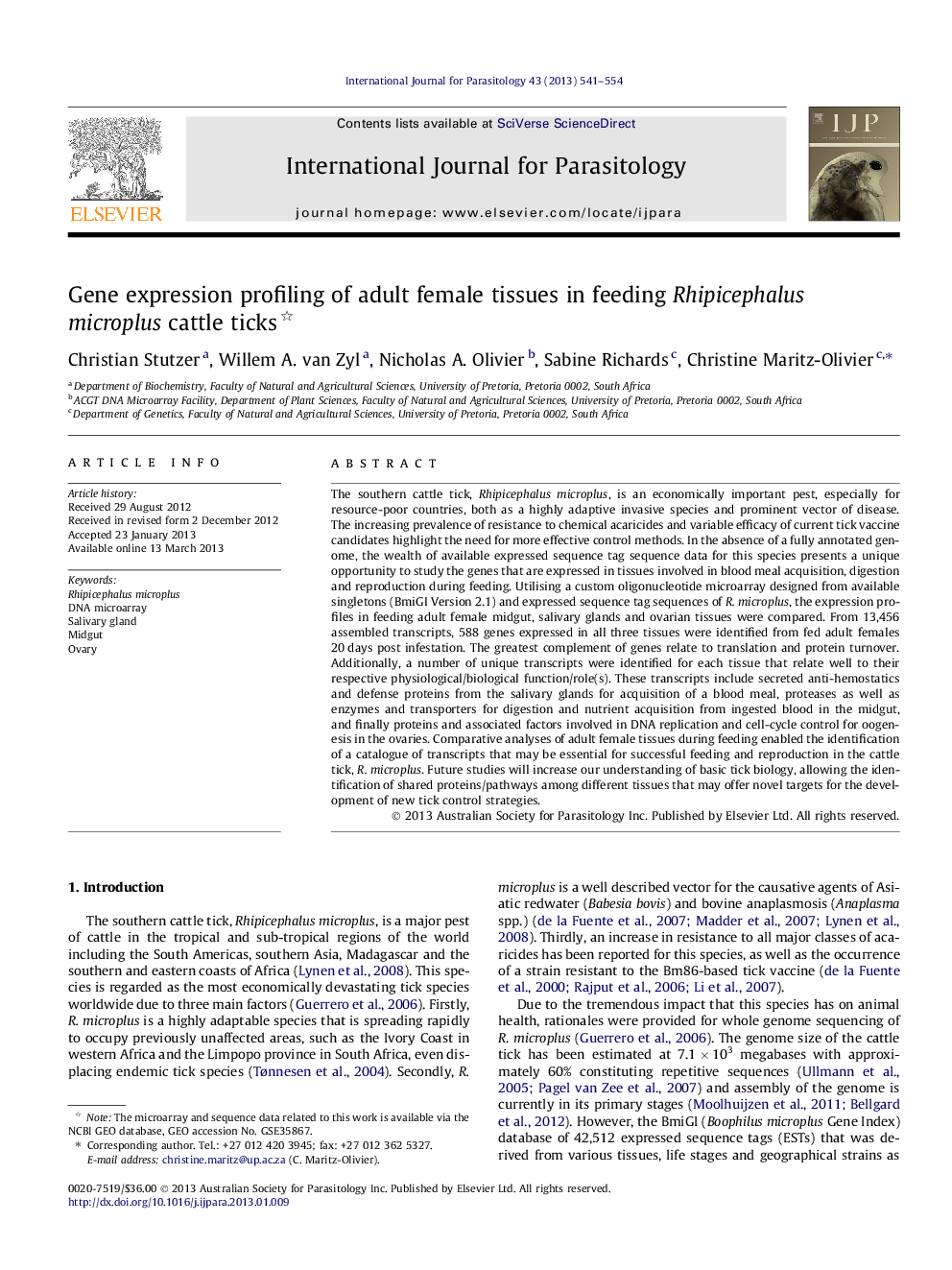| کد مقاله | کد نشریه | سال انتشار | مقاله انگلیسی | نسخه تمام متن |
|---|---|---|---|---|
| 2436054 | 1107266 | 2013 | 14 صفحه PDF | دانلود رایگان |

• A custom DNA microarray was designed from assembled sequences of Rhipicephalus microplus.
• Expression profiles were determined for midgut, salivary glands and ovarian tissues.
• Both tissue-specific and differentially expressed genes were investigated.
• Genes identified were related to basic metabolism and specific physiological functions.
• A catalogue of transcripts was identified that may offer targets for tick control.
The southern cattle tick, Rhipicephalus microplus, is an economically important pest, especially for resource-poor countries, both as a highly adaptive invasive species and prominent vector of disease. The increasing prevalence of resistance to chemical acaricides and variable efficacy of current tick vaccine candidates highlight the need for more effective control methods. In the absence of a fully annotated genome, the wealth of available expressed sequence tag sequence data for this species presents a unique opportunity to study the genes that are expressed in tissues involved in blood meal acquisition, digestion and reproduction during feeding. Utilising a custom oligonucleotide microarray designed from available singletons (BmiGI Version 2.1) and expressed sequence tag sequences of R. microplus, the expression profiles in feeding adult female midgut, salivary glands and ovarian tissues were compared. From 13,456 assembled transcripts, 588 genes expressed in all three tissues were identified from fed adult females 20 days post infestation. The greatest complement of genes relate to translation and protein turnover. Additionally, a number of unique transcripts were identified for each tissue that relate well to their respective physiological/biological function/role(s). These transcripts include secreted anti-hemostatics and defense proteins from the salivary glands for acquisition of a blood meal, proteases as well as enzymes and transporters for digestion and nutrient acquisition from ingested blood in the midgut, and finally proteins and associated factors involved in DNA replication and cell-cycle control for oogenesis in the ovaries. Comparative analyses of adult female tissues during feeding enabled the identification of a catalogue of transcripts that may be essential for successful feeding and reproduction in the cattle tick, R. microplus. Future studies will increase our understanding of basic tick biology, allowing the identification of shared proteins/pathways among different tissues that may offer novel targets for the development of new tick control strategies.
Figure optionsDownload high-quality image (195 K)Download as PowerPoint slide
Journal: International Journal for Parasitology - Volume 43, Issue 7, June 2013, Pages 541–554